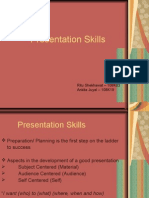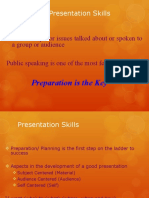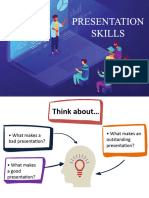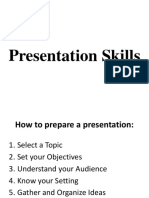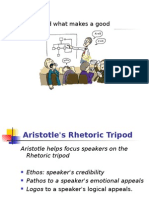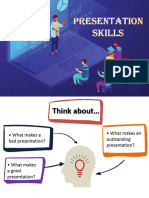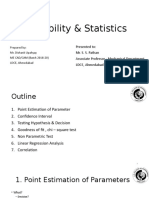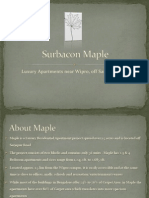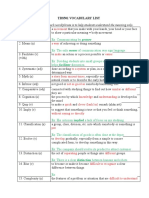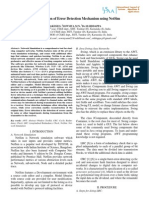0% found this document useful (0 votes)
109 views20 pagesPresentation Skills for Students
The document provides guidance on developing effective presentation skills. It discusses preparing for a presentation by focusing on the subject matter and audience. Presentations should have a clear structure with an introduction, body, and conclusion. PowerPoint slides should emphasize one main idea per slide with simple formatting and visuals. Presenters are advised to practice and use engaging body language like movement and eye contact when delivering a presentation to clearly communicate with the audience.
Uploaded by
Dishank UpadhyayCopyright
© © All Rights Reserved
We take content rights seriously. If you suspect this is your content, claim it here.
Available Formats
Download as PPTX, PDF, TXT or read online on Scribd
0% found this document useful (0 votes)
109 views20 pagesPresentation Skills for Students
The document provides guidance on developing effective presentation skills. It discusses preparing for a presentation by focusing on the subject matter and audience. Presentations should have a clear structure with an introduction, body, and conclusion. PowerPoint slides should emphasize one main idea per slide with simple formatting and visuals. Presenters are advised to practice and use engaging body language like movement and eye contact when delivering a presentation to clearly communicate with the audience.
Uploaded by
Dishank UpadhyayCopyright
© © All Rights Reserved
We take content rights seriously. If you suspect this is your content, claim it here.
Available Formats
Download as PPTX, PDF, TXT or read online on Scribd
/ 20


